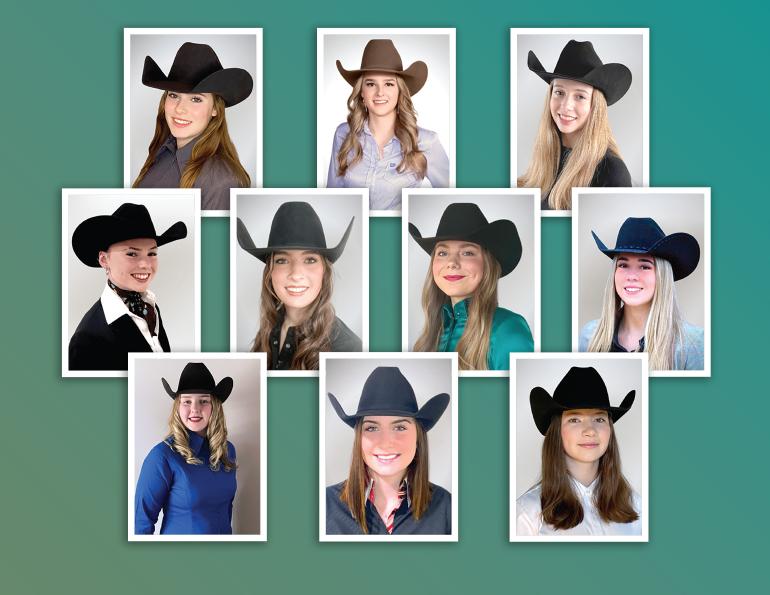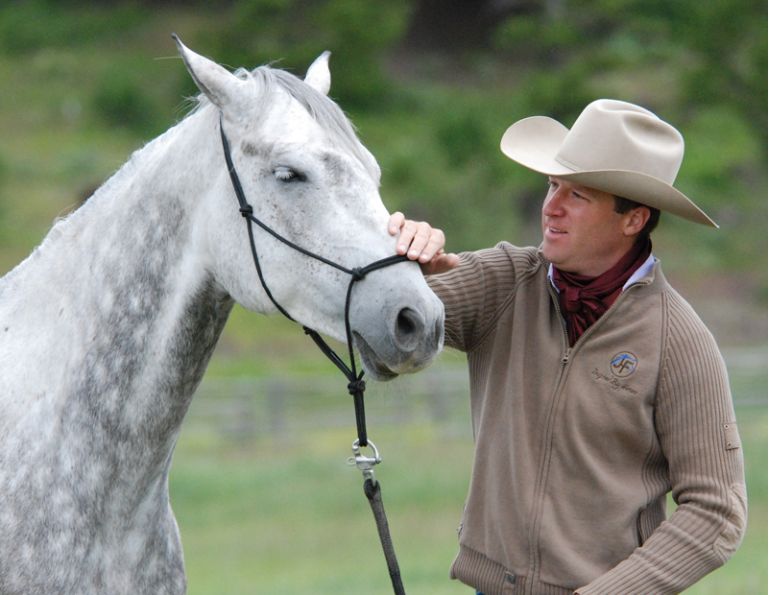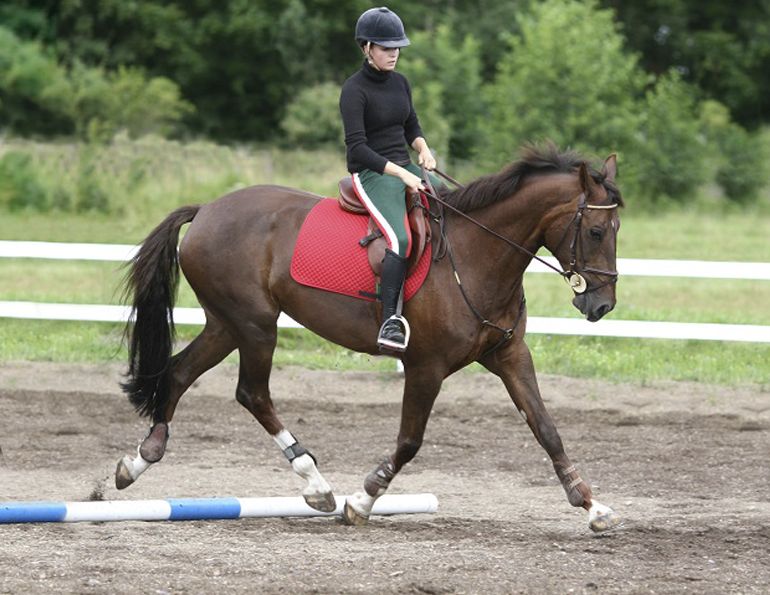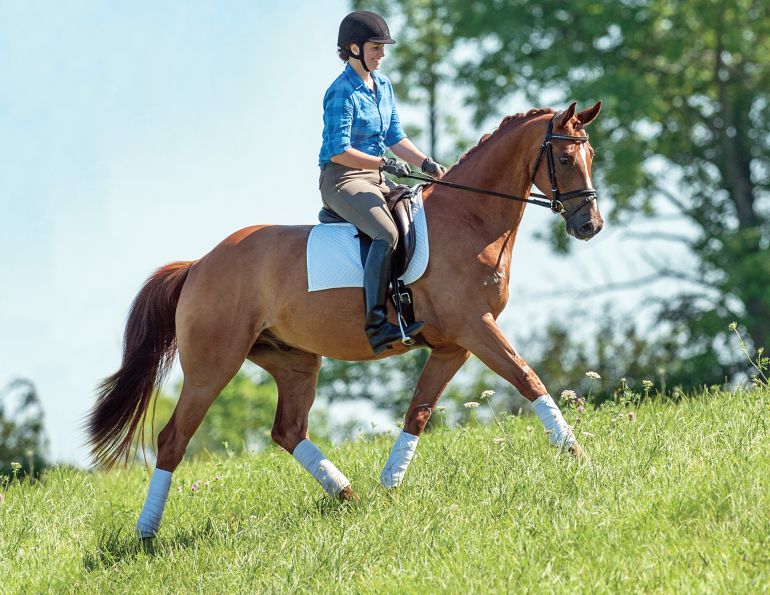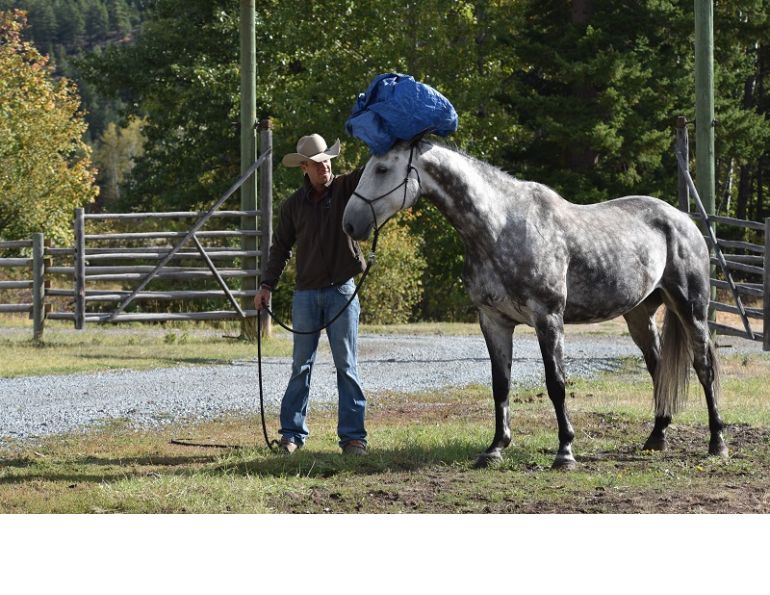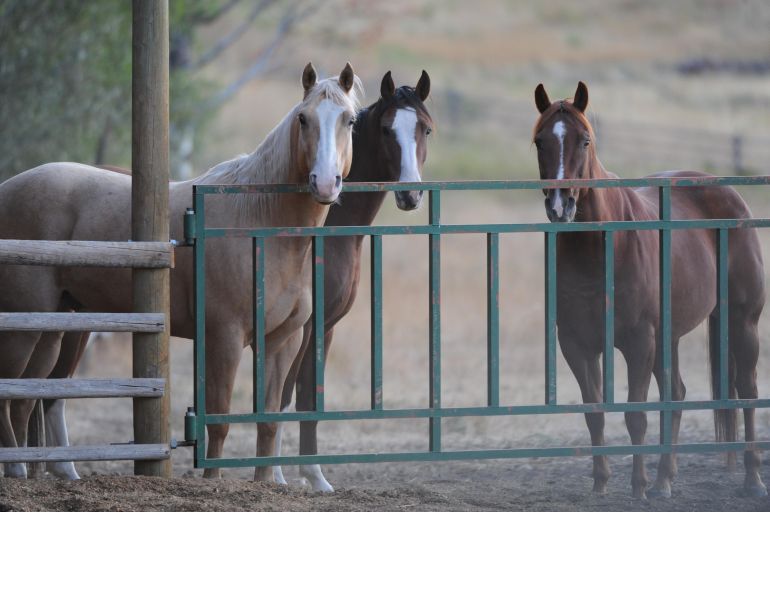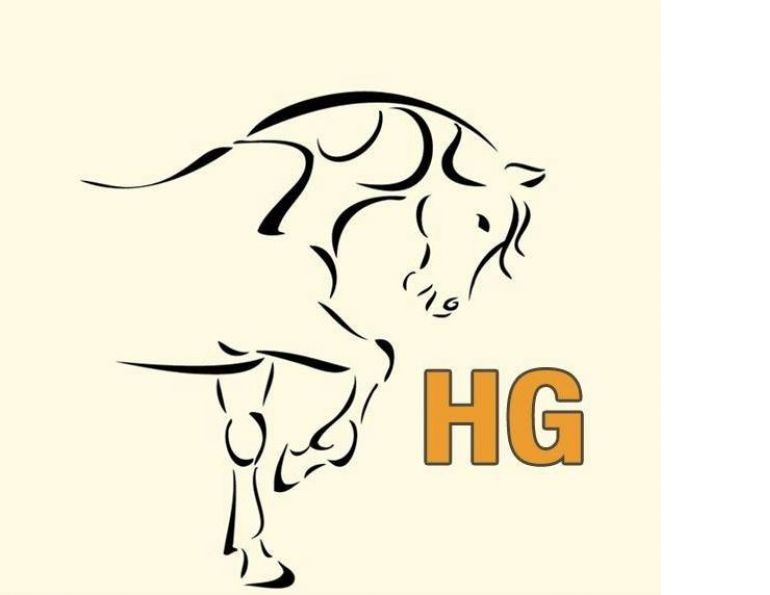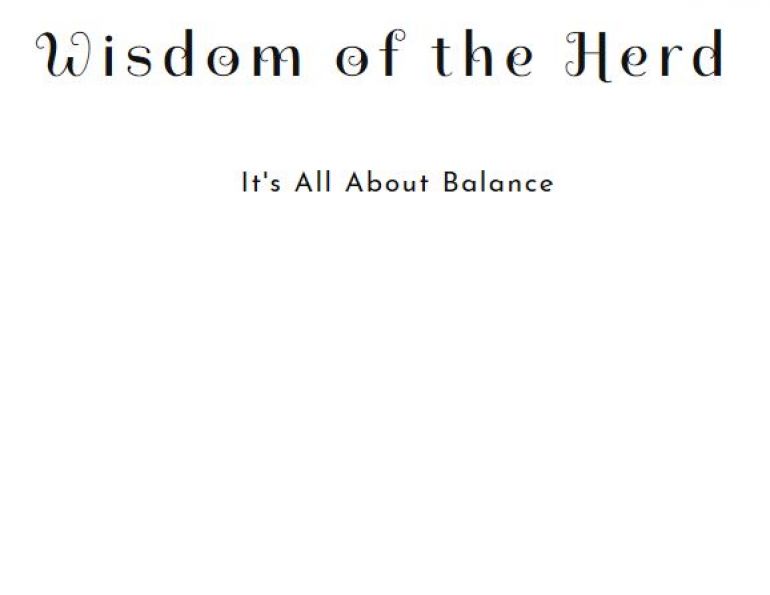By Jonathan Field
For years young horses have really fascinated me. There is nothing more thrilling than playing with a sensitive, keen mind and an open spirit. Whether it’s a foal, weanling, or yearling, it’s all fun to me.
One of my favourite pastimes is watching the interaction among youngsters and their mamas. There is so much to learn: how the foals discover the language of “horse,” the respect that is gained, and the love that is given. Many years ago I was watching Ronnie Willis, a mentor that I often mention in my articles and clinics. Ronnie was working with a new foal. He wanted to make this first contact with the human touch the best experience possible. As he leaned down and allowed the foal’s curiosity to build its confidence enough to come over for a sniff, Ronnie said, “It’s hard to tell if you’re working on the start or the finish!”
To this day, I think of that statement. Is it the start or is it the finish? Every time I get the chance to play with a young horse, even if it’s a newborn, I know that what I do today will influence what this horse thinks of me and everyone else he comes in contact with from this moment on.
We don’t realize how much the initial handling of a young horse will impact its future. The horse is so very different from humans. In order to survive, horses are born ready to learn. They learn so much more in the first few days of their lives than the human brain is capable of during the same time period. During the first three days, the foal can run, stop, turn, pick up both leads, and maybe even throw in a buck or two. He learns the majority of the language that he needs to be safe and, just by looking at the stance of mama and the herd, he can tell whether it’s time to relax and play, or run for his life.The horse is a precocial species (offspring born relatively mature and independent, mobile from the moment of birth) and that sets them apart from humans as an altricial species (highly dependent, incapable of moving on their own at birth). One of the main differences is that horses are neurologically mature enough to learn at birth, unlike humans who have a very limited ability at birth as our human brains take years to come “online.” From the start, this gives us a great opportunity to get a horse’s future right… or wrong. Because they are born learners, foals can learn both the positive and the negative equally.
If we learn to differentiate between a young horse and a human baby, it will help put us on the right track. It is very important when handling a young horse to understand that he needs a lot of time to physically mature. Be aware that overtaxing a young horse physically can be very damaging. While he has an open and willing mind, he has not developed at the same speed physically. We have to proceed carefully. Later in this article I’ll outline more about the types of movements I will ask of the young horse.
Mistakes are often made in the first training sessions. This happens because foals and weanlings are small and it is easy for people to handle them incorrectly.
The following are the two most common mistakes made:
- The “love, love, love and buckets of carrots” tradition, where the cute little cuddly baby turns into a very difficult, disrespectful horse when it crosses the 1000 pound mark.
- The “I’ll show him who is boss while I have the size advantage” tradition. This often results in the horse losing interest and trust in humans and becoming over-flighty and defensive for the rest of his life.
In both these scenarios, we tend to realize too late that we only have ourselves to blame for the outcome… just like with kids, right? Hindsight is foresight. Not only is it hard to find this balance as a parent (which I’m working on all the time with my two boys, aged four years and 18 months), but with a horse it seems even harder to know what to do because there are so many confusing ideas about what we should be doing. Combine that with the fact that horses are so innately different from humans, and is it any wonder we make mistakes?
Getting Started
In the first instant of contact, I want the horse (of any age) to build a desire to come over and have a sniff to meet me. I want to allow him this time to feel me in his pen and be okay with it. If he’s a foal, I want to gain the dam’s trust and make her comfortable with me, so I make friends with her first. This is her foal and I don’t want her thinking she has to defend her space or her foal.
The mindset I want to establish is to have the young horse see me as a friend. During the first few hours and the following days, I proceed slowly. The most important thing is to take the time to desensitize the foal to your presence and to befriend him.
You can’t rush this. Every horse is different depending on the environment and the mare.
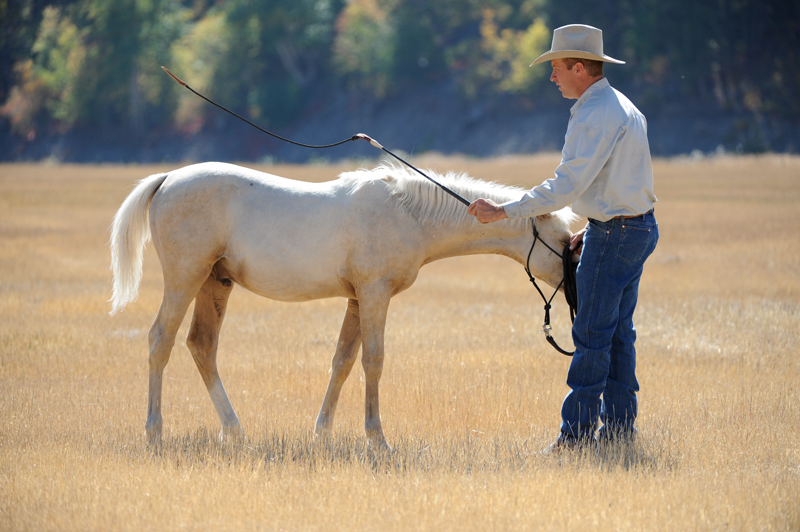
Desensitizing Gold Rush to the mini horseman’s stick and string.
The next step is to build a bit of a language. As the young horse’s confidence increases, it is very natural for him to see if he can push you around. He is not being bad; he is being a horse. He wants to know where you fit in his herd. This is where the balance I spoke about begins. You want to make friends, but you don’t want to be pushed around. Remember: what is cute today may not be cute in a year or two. So with assertion, not aggression, ask the young horse to yield out of your personal space because that space is to be respected. I love him to come close to me providing he doesn’t try to be dominant. He learns this quickly because he has already learned this with his mama or with the herd. Orphaned foals are harder to deal with because they haven’t had a mare teaching them every moment of the day and it takes a lot more time to establish respect.
As this little dance plays out, I slip in bits of communication, such as stop and stand close to me, back away, and move the hindquarters or forequarters, and then I rub the legs before picking up all four feet. At this point, all of this can be done slowly and without ropes.
Depending upon the situation, I may move to some type of rope setup. This could be a halter and lead, possibly combined with a bum or belly rope combination. How I go about this depends upon how well we did with the basic fingertip yields. Do this only in a small area and it’s best to have a handler for the mare while you play with the foal.

Gold Rush builds confidence as he learns to follow a ball.
Start with quality time. Get used to hanging out in each other’s space. At this point, it’s about hanging out together near the mare if it’s a foal, or walking around to see new stuff if it’s a weanling or yearling.
I like to hang out with babies in new and stimulating environments. Time spent in the arena when it’s full of activity such as the quad and trailer going by to feed horses, people riding, and when the cattle are in there, is especially beneficial. Events of this nature are all about letting the young horse experience new situations and have the time to soak it up. No matter the age, horses need to be exposed to new things when nothing is required of them. Around the yard, no matter what the activity, rarely will you see me without a horse close by. This is not only beneficial but a very relaxing time for me as I love the company of horses.
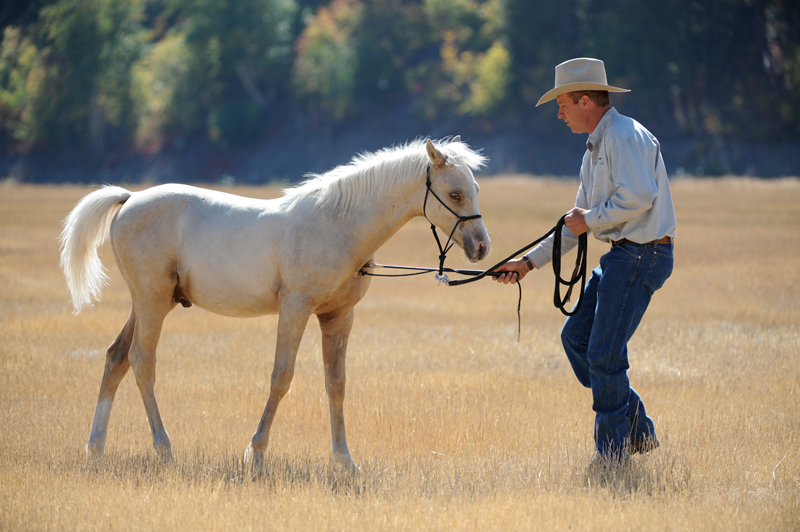
I practice short yields away from the touch of my hand, the rope, or my mini horsemen’s stick. I ask him to move away from pressure on the hindquarters and forequarters, and to back a few steps away from me. Friendly desensitization is also very important. I rub him all over with my hands and swing ropes around him and gently over his back. I practice on my roping dummy with him beside me. I also do foreign object desensitization: I rub plastic bags all over his body, swing saddle blankets and pads onto his back, and even rub him with things like pool noodles. All of this, over time, helps the horse generalize that different objects will do him no harm. This is so valuable for the future.
I rub the legs and pick up the feet a lot. I also simulate the rasp strokes and hammer pounds with my hands and the actual tools that a blacksmith might use.
I load him and stand him in a horse trailer. This may seem early for a foal or weanling, but what if you have a late night medical emergency? It’s important that during the pressure of an emergency the young horse doesn’t also have to be desensitized to a horse trailer and all its noises.
Walking him over tarps, rails, and logs, and through water every chance I get is also a really valuable way to get the young horse used to new things.
These types of exercises are valuable for our older horses too. If this early opportunity of time has already passed for your horse, I want to emphasize that hope is not lost. You may know that your horse had a tough start when he was young and vulnerable. If so, you should also know that he is a born learner and retains an amazing ability to change and learn for the rest of his life.
As I travel around the country teaching clinics, I have had the opportunity to work with hundreds of horses and to observe and learn these concepts from the best teachers — the horses themselves.
Horses never cease to amaze me if we get it right for them!
Go out, be safe, have fun, and stay “Inspired by Horses!”

Steps with a Young Horse
#1 Befriend
#2 Build a Language
#3 Establish Respect
#4 Build Confidence
To read more articles by Jonathan Field on this site, click here.
Main photo: As Gold Rush walks alongside me, I use my hand to ask for a slight left bend in his body for just a moment. This is the beginning for many moves that will happen in his life as he matures.#5 Spend lots of unstructured time together
Photos: Robin Duncan Photography.




